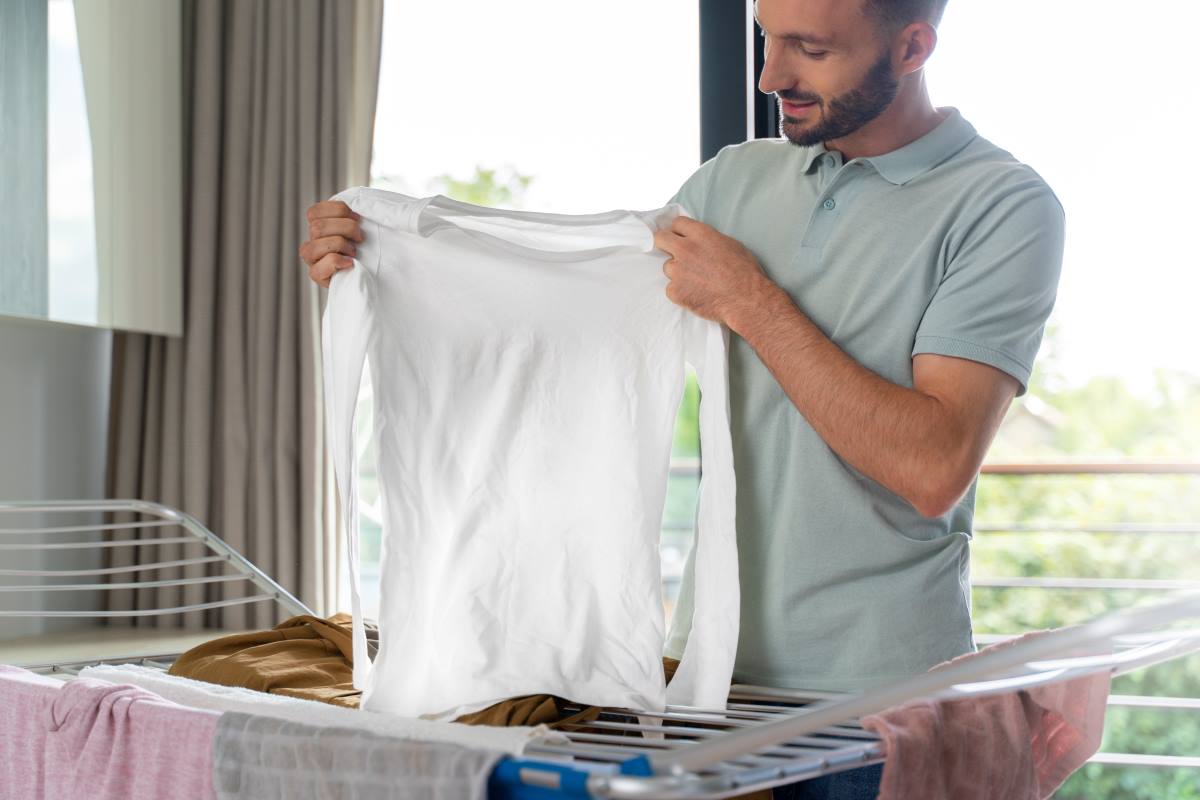Removing grease stains from clothing can be stressful and challenging, especially if the person trying to remove the stains is unsure of how to proceed. If you don’t take fast action to remove grease stains from your clothing, they will irreparably damage your garments, regardless of the source of the grease (cooking, working on your automobile, etc.). To your relief, removing grease stains from clothing can be accomplished through the execution of a few straightforward procedures.
The removal of grease stains from clothing can be accomplished in five easy stages, which we will outline for you in this post. Following these instructions, you can remove grease stains from clothes in the finest condition possible and extend their useful lives.
Quick Access
5 Simple Steps To Remove Grease Stains from Clothes
Step 1: Blot the Stain
Blotting the stain with a paper towel or cloth is the first thing you should do when removing grease stains from clothes. Because of this, any excess grease on the fabric will be removed, making it much simpler to remove the stain.
You must properly blot the stain, as rubbing it will work to spread the grease further into the cloth. To stop the stain from getting any larger, apply light pressure from working from its perimeter toward its center.
Step 2: Apply Dish Soap
After removing as much of the stain as possible with paper towels, proceed to the next step: apply dish soap to the affected area. Dish soap is quite good in cutting through grease and can also be used to assist in removing stains from fabric.
To apply dish soap, first wet the discolored area with warm water, and then dab a little amount of dish soap on the stain itself. You can use your fingers or a brush with soft bristles to work the dish soap into the fabric.
Be careful not to scrub too vigorously, as doing so can cause the cloth to become damaged. Instead, massage the dish soap into the fabric using a gentle circular motion to ensure even distribution.
Step 3: Soak the Clothes
After applying dish soap to the stain, the next step is to soak the garments in warm water for some time. This will assist in further dislodging the stain, ultimately making it simpler to remove.
Warm water should be added to a sink or bucket, then a tiny amount of laundry detergent should be added. Put the garments in the water, then wait at least half an hour before removing them.
You may need to soak the garments longer if the stain is resistant. Regular inspection of the garments is required to determine whether or not the stain is beginning to disappear.
Step 4: Wash the Clothes
After giving the garments a good soaking, the following step is to put them through the washing machine and clean them. To clean your clothes effectively, run them through a standard cycle with warm water and a high-quality laundry detergent.
Be sure to read the washing instructions on the care label to see whether or not the garments may be cleaned in a machine. You may need to wash the clothing by hand instead of using a washing machine if they are delicate or require special care.
Step 5: Check the Stain
After you’ve washed the garments, inspect the stain to determine whether or not it was removed completely. Repeat the methods from the preceding section as often as necessary until the stain has been completely eradicated.
It would help if you refrained from drying the garments in the dryer until the stain has been eliminated. The heat from the dryer can cause the stain to become permanently embedded, making it even more difficult to remove.
If, despite your best efforts, the stain continues to be resistant to removal, try taking the garments to a dry cleaner. They might be able to remove the stain using professional cleaning procedures, bringing your garments back to the state they were in when you first bought them.
5 Different Methods To Remove Grease Stains From Clothes
Method 1: Dish Soap and Warm Water
Dish soap and warm water are the most straightforward and efficient approaches to remove grease stains from clothes. This approach works best for removing either quite new or relatively minor stains.
In order to utilize this technique, first saturate the stain with warm water, then directly apply a tiny amount of dish soap to the stained area. You can use your fingers or a brush with soft bristles to work the dish soap into the fabric.
After rubbing the dish soap into the fabric, rinsing the stain with warm water will help remove any remaining residue. If the stain is still noticeable, continue the technique until the stain is completely gone.
Method 2: Baking Soda and Vinegar
Combining baking soda and vinegar is yet another efficient approach for eliminating surface grease stains. This procedure works particularly well for stains resistant to removal or spots embedded in the fabric.
To employ this technique, make a paste by combining a little baking soda with water. Directly apply the paste to the stain, then wait fifteen to twenty minutes for it to take effect.
After the paste has had time to work its magic, apply white vinegar to the stained area to make it more absorbent. After washing the vinegar into the cloth with a brush with soft bristles, rinse the stain with warm water to remove any remaining residue. If the stain is still noticeable, continue the technique until the stain is completely gone.
Method 3: Cornstarch
Cornstarch is yet another way to remove grease stains from clothes that can be used successfully to remove oil stains from clothing. This procedure works well for stains that are either quite new or relatively modest in size.
Cornstarch should be sprinkled immediately onto the stain, and then it should be left alone for a period of half an hour. Cornstarch will absorb any grease that may be present on the fabric, making it much simpler to clean.
After the cornstarch has had some time to do its job, remove any excess with a brush with soft bristles and motions. If the stain is still noticeable, continue the technique until the stain is completely gone.
Method 4: Rubbing Alcohol
One more option that successfully removes grease stains from clothing is the use of rubbing alcohol. This procedure works particularly well for stains resistant to removal or spots embedded in the fabric.
To employ this technique, first, dab the stain with a clean cloth dampened with rubbing alcohol. To stop the stain from getting any bigger, be sure to start at the stain’s edge and work your way inward.
After the stain has been blotted up, the garment should be washed in warm water. If the stain is still noticeable, continue the technique until the stain is completely gone.
Method 5: Salt and Lemon Juice
Another option for removing grease stains from clothing is to combine equal parts salt and lemon juice in a bowl. This approach works best for removing either quite new or relatively minor stains.
To employ this technique, make a paste by combining a trace quantity of salt with fresh lemon juice in a bowl. Directly apply the paste to the stain, then wait fifteen to twenty minutes for it to take effect.
Once the paste takes some time, the stain should be washed with warm water. If the stain is still noticeable, continue the technique until the stain is completely gone.
Conclusion
You may feel overwhelmed at the prospect of removing grease stains from clothing, but if you follow these easy procedures, you can remove even the most stubborn stains. It is important to remember to inspect the stain before the garments are dried, blot the spot, apply dish soap, soak the clothing, and then wash them in the washing machine.
You may extend the life of your favorite items and keep them looking their best by properly caring for them and removing stains as soon as they appear. You don’t have to let grease stains keep you from wearing clean, fresh clothing; all it takes is a little time and work.

